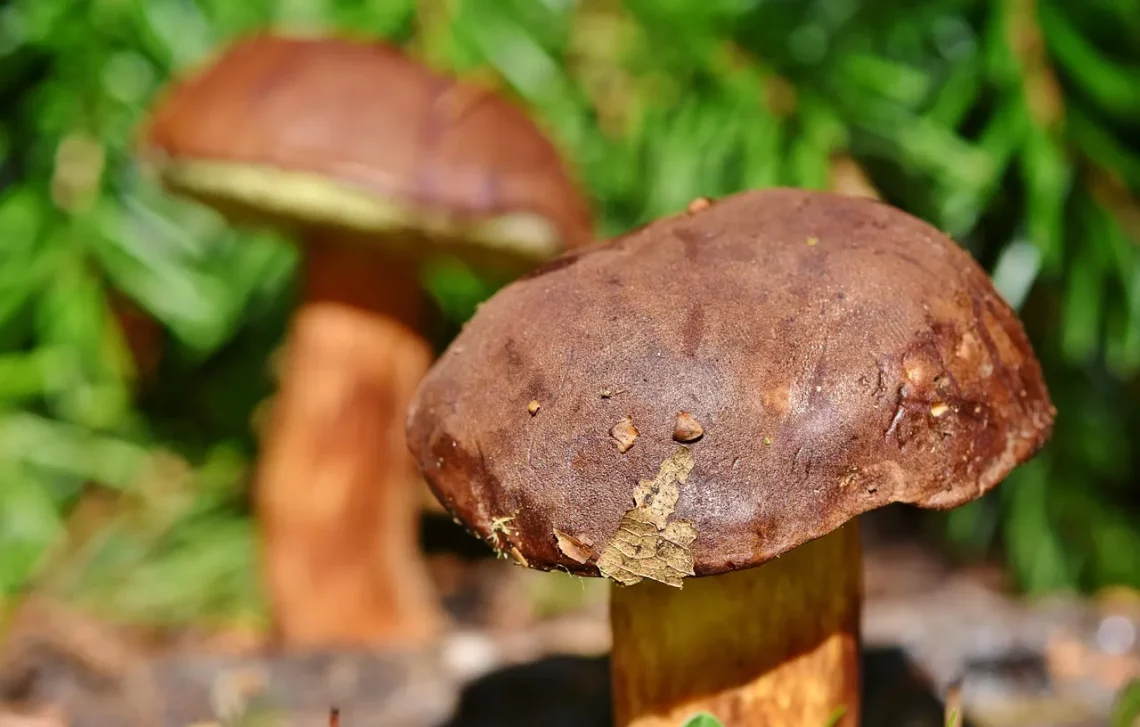
Exploring the Unique Culinary Uses of Pigs Ear Mushroom
Pigs Ear Mushroom, scientifically known as *Gomphus clavatus*, is a fascinating fungus that has gained popularity in recent years, not only for its unique shape and texture but also for its culinary versatility. Resembling the shape of a pig’s ear, this mushroom is often found in forests and wooded areas, thriving on decaying wood and organic matter. Its name alone sparks curiosity, but what makes the Pigs Ear Mushroom truly special is its rich flavor and adaptability in various dishes.
Culinary enthusiasts and chefs alike have begun to explore the myriad ways in which this mushroom can be incorporated into meals. With its slightly crunchy texture and earthy taste, it can enhance a variety of recipes, from soups and stews to stir-fries and salads. Beyond its flavor, the Pigs Ear Mushroom also offers a unique visual appeal that can elevate the presentation of any dish. As the culinary world continues to embrace foraged ingredients, understanding the unique attributes of the Pigs Ear Mushroom becomes essential for anyone looking to expand their culinary repertoire.
In this article, we will delve into the various culinary uses of the Pigs Ear Mushroom, exploring its flavor profile, preparation methods, and some creative recipes that highlight this distinctive fungus.
Flavor Profile and Culinary Characteristics
The flavor profile of the Pigs Ear Mushroom is one of its most intriguing aspects. Unlike some mushrooms that boast a strong umami flavor, the Pigs Ear has a milder, more subtle taste. This makes it an excellent canvas for various dishes, as it can absorb flavors from spices and other ingredients without overpowering them.
Its texture is another noteworthy characteristic. When cooked, the Pigs Ear Mushroom develops a slightly chewy consistency, reminiscent of other popular culinary mushrooms. This unique mouthfeel makes it an exciting addition to various dishes, providing a satisfying bite that complements both earthy and bright flavors.
In terms of aroma, the Pigs Ear Mushroom has a pleasant, woodsy scent that can enhance the overall sensory experience of a dish. This aroma can be particularly pronounced when the mushroom is sautéed or roasted, releasing its natural oils and flavors.
The versatility of the Pigs Ear Mushroom extends beyond its taste and texture. It can be used in a variety of cooking techniques, including grilling, sautéing, steaming, and even pickling. Each method brings out different aspects of the mushroom’s flavor and texture, allowing chefs to experiment and find the perfect preparation for their desired dish.
Moreover, the Pigs Ear Mushroom’s visual appeal cannot be overlooked. Its unique shape and vibrant color can add an artistic touch to any plate, making it a favorite among chefs who prioritize presentation. The mushroom’s natural beauty can elevate simple dishes, transforming them into culinary masterpieces.
In summary, the Pigs Ear Mushroom’s mild flavor, chewy texture, pleasing aroma, and striking appearance make it a valuable ingredient in the culinary world. Its adaptability allows it to shine in various dishes, encouraging cooks to explore its potential in the kitchen.
Preparation Techniques for Pigs Ear Mushroom
When it comes to preparing the Pigs Ear Mushroom, there are several techniques that can help bring out its best qualities. Understanding these methods will allow home cooks and chefs to maximize the mushroom’s flavor and texture while creating delicious dishes.
One of the most popular ways to prepare Pigs Ear Mushrooms is by sautéing them. This method involves cooking the mushrooms in a hot skillet with a bit of oil or butter. Sautéing allows the mushrooms to develop a golden-brown crust, enhancing their flavor while keeping their natural moisture intact. To sauté Pigs Ear Mushrooms, begin by cleaning them gently with a damp cloth to remove any dirt. Next, slice them into thin pieces, as this will help them cook evenly. Heat the skillet over medium-high heat, add your oil or butter, and then add the sliced mushrooms. Cook for about 5 to 7 minutes, stirring occasionally, until they are tender and golden.
Another excellent preparation technique is roasting. Roasting Pigs Ear Mushrooms brings out their natural sweetness and adds a depth of flavor that can be quite delightful. To roast the mushrooms, preheat your oven to 400°F (200°C). Toss the cleaned and sliced mushrooms with olive oil, salt, and pepper, and spread them out on a baking sheet in a single layer. Roast for approximately 15 to 20 minutes, flipping them halfway through, until they are crispy and caramelized.
For those looking to incorporate Pigs Ear Mushrooms into soups or stews, a simple method is to add them to the pot during the cooking process. Slice the mushrooms and sauté them briefly before adding other ingredients, allowing them to release their flavors and meld with the broth. This technique not only enhances the dish but also infuses the soup with a rich, earthy aroma.
Additionally, Pigs Ear Mushrooms can be pickled for a unique flavor experience. Pickling involves immersing the mushrooms in a vinegar-based solution, which adds a tangy kick to their natural taste. To pickle Pigs Ear Mushrooms, clean and slice them, then boil them briefly in a mixture of vinegar, water, sugar, and spices. Allow the mushrooms to cool in the brine before transferring them to a jar for storage. Pickled mushrooms can be used as a zesty garnish for salads, sandwiches, or charcuterie boards.
In conclusion, the preparation techniques for Pigs Ear Mushrooms are diverse and adaptable. Whether sautéed, roasted, added to soups, or pickled, these mushrooms can shine in various culinary applications, making them a fantastic ingredient for experimenting in the kitchen.
Creative Recipes Featuring Pigs Ear Mushroom
Now that we’ve explored the flavor profile and preparation techniques for Pigs Ear Mushroom, it’s time to delve into some creative recipes that showcase this unique ingredient. These dishes are designed to highlight the mushroom’s versatility while providing a delicious dining experience.
One delightful recipe is Pigs Ear Mushroom Stir-Fry. To prepare this dish, begin by gathering your ingredients, which include fresh vegetables such as bell peppers, broccoli, and snap peas, along with the Pigs Ear Mushrooms. Start by slicing the mushrooms and vegetables into bite-sized pieces. In a large skillet or wok, heat some sesame oil over high heat. Add the mushrooms first, allowing them to sauté for a few minutes until they begin to soften. Next, add the vegetables and continue to stir-fry for another 5 to 7 minutes, adding soy sauce, garlic, and ginger for flavor. Serve this vibrant stir-fry over a bed of rice or noodles for a satisfying meal.
Another inventive recipe is Creamy Pigs Ear Mushroom Risotto. The creaminess of the risotto pairs beautifully with the earthy flavor of the mushrooms. To make this dish, start by sautéing the sliced Pigs Ear Mushrooms in olive oil until they’re golden. In a separate pot, cook arborio rice with vegetable broth, stirring constantly. Once the rice is almost done, fold in the sautéed mushrooms, a splash of white wine, and a generous amount of Parmesan cheese. Finish with fresh herbs like parsley or thyme for added flavor and garnish.
For a lighter option, consider preparing a Pigs Ear Mushroom Salad. This refreshing dish can be made by roasting the sliced mushrooms, as described earlier, and then tossing them with mixed greens, cherry tomatoes, and a tangy vinaigrette. Top the salad with crumbled feta cheese and toasted nuts for an extra layer of flavor and texture. The combination of roasted mushrooms and fresh vegetables creates a delightful contrast that is perfect for a summer meal.
Lastly, for those who enjoy a heartier fare, a Pigs Ear Mushroom and Barley Soup is an excellent choice. Begin by sautéing onions, carrots, and celery in a pot before adding the sliced mushrooms. Pour in vegetable broth and add pearl barley, letting the ingredients simmer until the barley is tender. This soup not only warms the soul but also highlights the unique flavor of the Pigs Ear Mushroom in a comforting way.
In summary, these creative recipes showcase the adaptability and deliciousness of the Pigs Ear Mushroom. From stir-fries to salads, this unique ingredient can elevate any meal, allowing home cooks to explore new culinary horizons.
In conclusion, the Pigs Ear Mushroom is a remarkable ingredient that offers a range of culinary possibilities. Its mild flavor, unique texture, and aesthetic appeal make it a valuable addition to various dishes. By mastering different preparation techniques and experimenting with innovative recipes, chefs and home cooks can fully appreciate the culinary potential of this fascinating fungus.
**Note:** This article is for informational purposes only and should not be considered medical advice. Always consult a healthcare professional regarding any health concerns or dietary changes.




